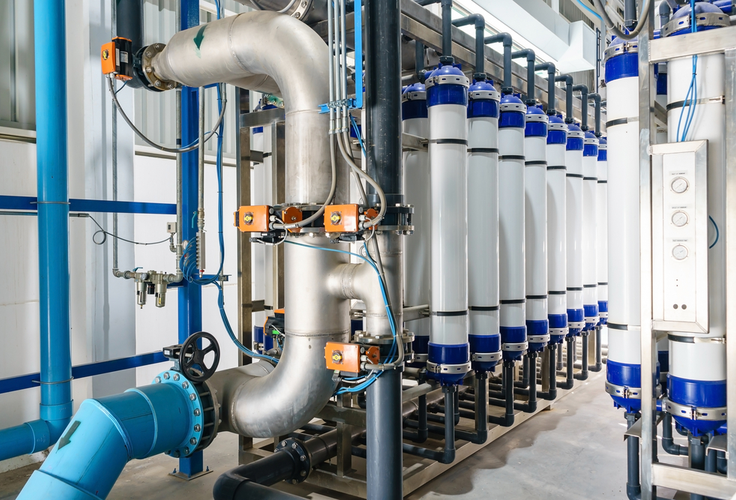
High efficiency air filters are used in various industries and for many purposes. One such application is to use high efficiency filters to remove hazardous/harmful matter from exhaust air before releasing that air to the outdoors. To keep the system operating at its full potential, the filters will need to be replaced periodically. Old traditional filter housings (Non-BIBO) offer no protection or containment during the filter replacement process and therefore require service personnel to wear appropriate Personnel Protection Equipment (PPE) to protect themselves from the hazard. Special consideration must also be given to the immediate area where the filter replacement occurs because it will be exposed to the contaminated filter as well as the open filter housing.
A bag-in/bag-out (BIBO) system is one of the most reliable and safest methods for replacing contaminated hazardous filters. These specially designed housings provide both personnel and environmental protection by utilizing a bag system and change out procedure that prevents the filter or interior housing from being exposed to the environment.
How do BIBO Systems Work?
BIBO systems feature side mounted access doors that allow for the removal of contaminated filters directly into a heavy-duty disposal bag. These specially designed housings have a collar that allows for the attachment of the bag which remains in place after the door is sealed. When it is time for the filter replacement, the door is removed to expose the already installed disposal bag and the process begins. The procedure followed must allow for the filter replacement inside a closed system by using multiple bags. The contaminated filters are removed one at a time from the housing by pulling them into the bag that is sealed to the housing collar. The bag is then twisted, sealed, and then cut in half. This process leaves half of the bag still sealed to the housing while the other half is sealed with a contaminated filter inside. A new bag is installed to the housing collar over top the existing half bag. Once the new bag is sealed to the housing, the half bag is pulled into the new bag along with another contaminated filter. This process is repeated until all the contaminated filters have been removed from the housing.
The process of installing new filters is accomplished by reversing the same technique. A new filter is placed inside a new bag and then the bag is installed over top of the half bag still attached to the housing collar. Once the new bag is sealed, the old half bag is pulled into the new bag and past the new filter so that it doesn’t end up inside the filter housing. This process is repeated until all new filters are installed and a new full bag is securely mounted to the housing collar for future use.
Depending upon the application, housings may contain HEPA, ULPA or HEGA filters, and may even contain a combination of these filters as a multistage filtration system.
BIBO systems are suitable for a wide range of filtration applications, including gaseous compounds and nuclear/radiation material. When safety is the primary concern, a BIBO system is generally the most reliable and safest method for filter removal and installation.
Technical Safety Services is a laboratory testing and certification leader with expertise in performing services and equipment validation for controlled environments. We are available to assist you in facility commissioning, process validation and more. Especially in scenarios where hazardous materials will be on hand and safety and certification are paramount concerns, we offer a wealth of experience and knowledge to help you maintain a safe and compliant facility. To learn more, contact us today.

